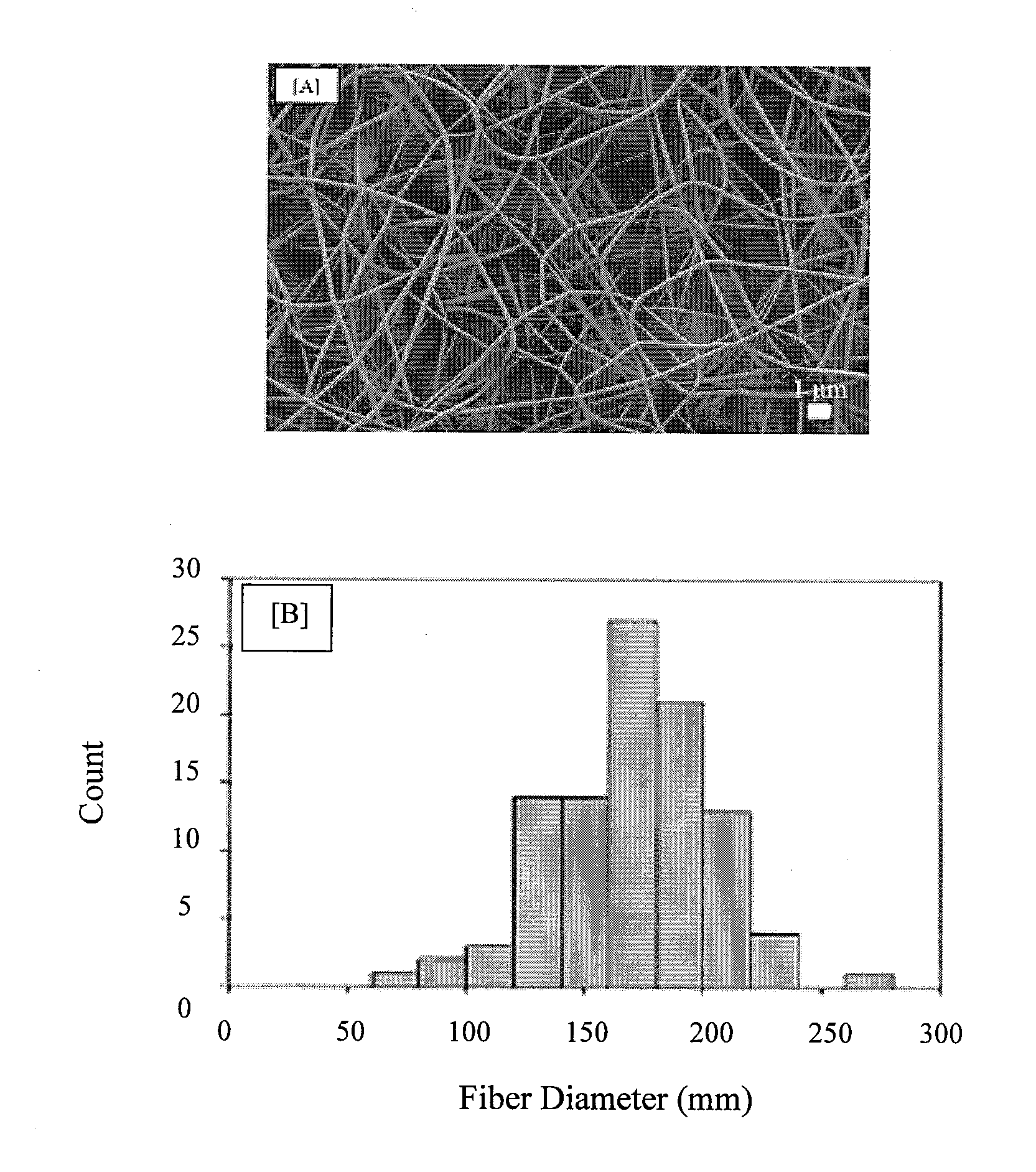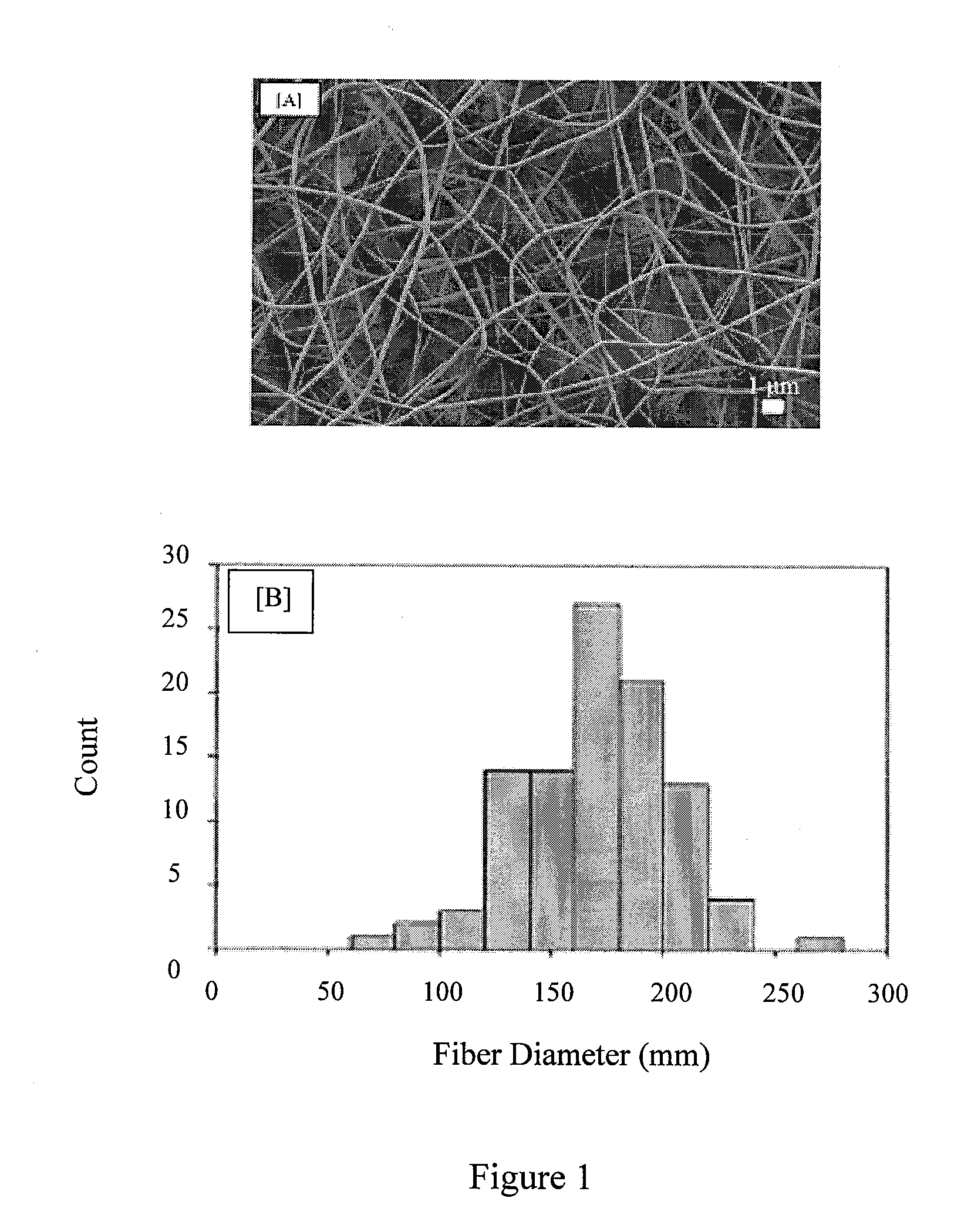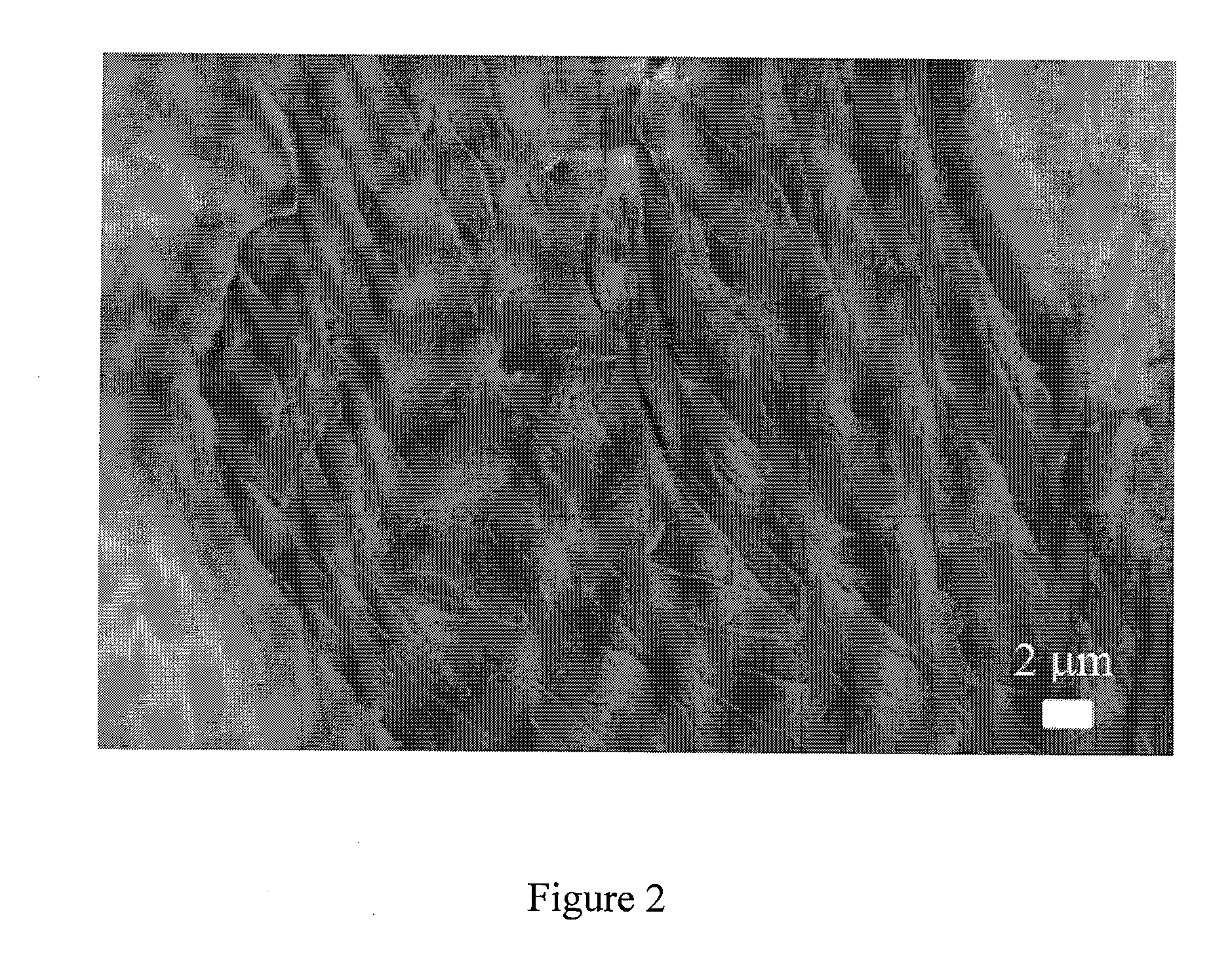Compositions and methods to cross link polymer fibers
a polymer fiber and polymer technology, applied in the field of polymer fiber compositions and methods, can solve the problems of fiber inherently unstable in an aqueous environment, loss of nanofibrous morphology, loss of nanofibrous structure, etc., and achieve the effect of improving the stability of fibers
- Summary
- Abstract
- Description
- Claims
- Application Information
AI Technical Summary
Benefits of technology
Problems solved by technology
Method used
Image
Examples
example 1
Preparation of Collagen Fibers
[0077]Materials
[0078]Rat tail collagen type 1 was purchased from Sigma Aldrich (C7661); 1,1,1,3,3,3 Hexafluoroisopropanol (≧99%) was purchased from Sigma Aldrich (105228); Glutaraldehyde (25% in water) was purchased from Sigma Aldrich (G5882); Dulbecco's Modified Eagle Medium (DMEM) was purchased from Invitrogen (12571-063); Anhydrous Isopropanol (99.7%) was purchased from Caledon labs (8601-2); Genipin was purchased from Challenge Bio Products Ltd.
[0079]Determination of Collagen Fiber Diameters and Calculating Fiber Swelling
[0080]All samples were imaged using a Scanning Electron Microscope (Leo 1530) and diameters of 100 randomly selected fibers were measured, per sample, using image processing software (ImageJ). One-way ANOVA using the Tukey test was used to compare the difference between the diameters of crosslinked samples (Dcrosslink) and after exposure to growth media for 1 and 3 days (Dfinal). If a significant difference existed, the percent swel...
example 2
Effect of Changing Crosslinking Solution Composition on Collagen Fiber Stability
[0085]The experimental parameters investigated were: solvent (isopropanol, ethanol), water content (0%, 1%, 3% and 5%) and reaction time (1, 3 and 5 days). All electrospun collagen fiber samples were exposed to air and the reaction temperature was maintained at 37° C. in an incubator. The genipin concentration was fixed at 11.3 mg of genipin per mg of collagen, which was sufficient for the crosslinking reaction to reach completion (Yao, C. H., et al., Materials Chemistry and Physics 2004, 83, (2-3), 204-208). After crosslinking, the collagen samples were washed in ethanol or isopropanol (depending on the solvent used) for further characterization.
TABLE 1Crosslinking conditions for electrospun collagen nanofibers withgenipin that yielded stable fibers after exposure to an aqueousenvironmentWaterCrosslinkingCrosslinkingcontenttimeconditionSolvent(v / v %)(days)1Ethanol532Ethanol353Ethanol554Isopropanol55
[008...
PUM
| Property | Measurement | Unit |
|---|---|---|
| diameter | aaaaa | aaaaa |
| distance | aaaaa | aaaaa |
| flow rate | aaaaa | aaaaa |
Abstract
Description
Claims
Application Information
 Login to View More
Login to View More - R&D
- Intellectual Property
- Life Sciences
- Materials
- Tech Scout
- Unparalleled Data Quality
- Higher Quality Content
- 60% Fewer Hallucinations
Browse by: Latest US Patents, China's latest patents, Technical Efficacy Thesaurus, Application Domain, Technology Topic, Popular Technical Reports.
© 2025 PatSnap. All rights reserved.Legal|Privacy policy|Modern Slavery Act Transparency Statement|Sitemap|About US| Contact US: help@patsnap.com



